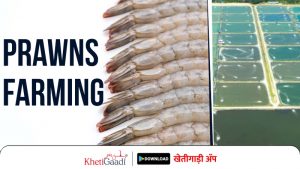One of the most successful cash crops in some parts of India is strawberries. In areas of India with the right weather and soil, it can be grown. India has a variety of climates, making it impossible for farmers to grow strawberries everywhere, but there are some areas where they do well.
States that grow strawberries in India include Himachal Pradesh, Uttar Pradesh, Maharashtra, West Bengal, Delhi, Haryana, Punjab, and Rajasthan. Note that, with the exception of Himachal Pradesh, only a portion of each state is ideal for strawberry farming.
When the strawberry season comes around, growers in Mahabaleshwar, Maharashtra, one of the largest strawberry cultivators, make a tonne of money selling strawberries at both small and large outlets.
Other notable strawberry-growing hotspots include Kashmir Valley, Bangalore in Karnataka, Nainital and Dehradun in Uttarakhand, Kalimpong in West Bengal, and Nainital and Dehradun in Uttarakhand.
Key Information For Strawberry Growing:
- The ideal temperature for strawberries is between 13 and 22 degrees Celsius. To enhance fruiting and flowering, plants need a minimum of 8 hours of full light per day. Both the weather and the temperature affect plant development.
- Although strawberries are not picky about their soil, sandy loam or loam is optimal for strawberry production.
- Since strawberries are perineal, it is best to avoid the first-year crop and remove the blooms to stop the plant from flowering. When a plant begins to fruit, it diverts its resources to the development of the fruit. By encouraging root and plant growth, pinching the blossoms will increase production in the second year.
- In the winter, strawberry plants will remain dormant, especially if the nighttime temperature falls below 6 degrees Celsius. At this time, it’s critical to provide sufficient mulching for plants and ward off pests like slugs. Once the temperature is back to normal, the plants will begin to grow fully once more.
- Currently, there are many distinct varieties available. Several of the popular types that are readily accessible in India include Chandler, Tioga, Torrey, Selva, Belrubi, Fern, and Pajaro. The variety with the highest yield is Chandler, followed by Tioga in second place.
- Because they have short roots, strawberries need moisture all the time. Due to its lack of drought tolerance, take care to prevent the roots from drying out.
- Another issue is overwatering, which can result in root rot and other diseases. The key to preventing illnesses and enhancing plant growth is to maintain moist soil that is not soggy or overly damp.
- A great output is 8 Tonnes per acre on average. During peak season, some areas have recorded yields of up to 20 tonnes per acre.
A strawberry plantation’s climate:
Although certain kinds can grow in warmer climates, strawberry farming requires a temperate temperature. They are plants with brief days. They require a photoperiod (sunlight) of eight to twelve hours for roughly 10 days in order to form flowers.
Winter is when they go dormant and stop growing. After winter, spring arrives with the lengthening of the days. As a result, the plants receive sunlight, and the flowering process begins. However, cultivators produced in subtropical areas with mild winters continue to produce new growth.
Growing Strawberry Plants
Runners are used in strawberry propagation, which is regarded as natural vegetative propagation.
Strawberry vegetative propagation
The leaf axils generate the stolon, a creeping stalk that grows from the parent plant in the summer. A runner plant forms at the second node of the stolon, and the runner plants develop a new stolon.
Runner plants initially generate fewer roots, but they later grow an overwhelming amount of fibrous roots. Runners are cut off from the mother plant after they have developed enough growth and roots to be planted elsewhere.
Production of runners should be done on a different bed. Planting should be done at a distance of 1.2 × 1.2 m or 1.8 x 1.8 m. The average deemed good rate of production is 30-40 runners per plant.
The Need for Water and Irrigation:
Strawberry plants have shallow roots, therefore they require frequent watering to prevent drought damage. It does not, however, require a lot of water in terms of volume. Just keeping the roots damp is enough water to encourage vegetative development.
Frequent watering of the runners after planting promotes vegetative development during autumn planting. Additionally, regular irrigation encourages the production of more runners, which promotes early roots in newly planted buds.
If there is no rain during the plantation, irrigate the field twice a week. In November, the frequency was reduced to once per week. In the winter months of December and January, perform irrigation once every fifteen days.
Strawberry Production and Yield
When between 50 and 75 percent of the berry’s skin turns color, the berries are plucked. Berry harvesting for long-distance markets begins as soon as the fruit reaches its peak color.
Harvesters pick fruits one to two inches from the calyx, including the caps or calyx and the stalk. Harvesters should gather fruits every day or every other day during the peak season. The suggested cultivars typically yield between 200 and 500 g per plant.
Maintenance costs:
It’s critical to protect the crops in regions where winter temperatures drop below 6 degrees Celsius. For the protection of plants, a low tunnel system is necessary. It costs more to do this in cooler climates. In other places, the standard drip irrigation and fence to keep out pests and animals also increase the expense.
Check the Khetiguru mobile application for farming-related updates. You can also get information about tractors, tractor prices, tractor games, and tractor videos from Khetigaadi.com.




